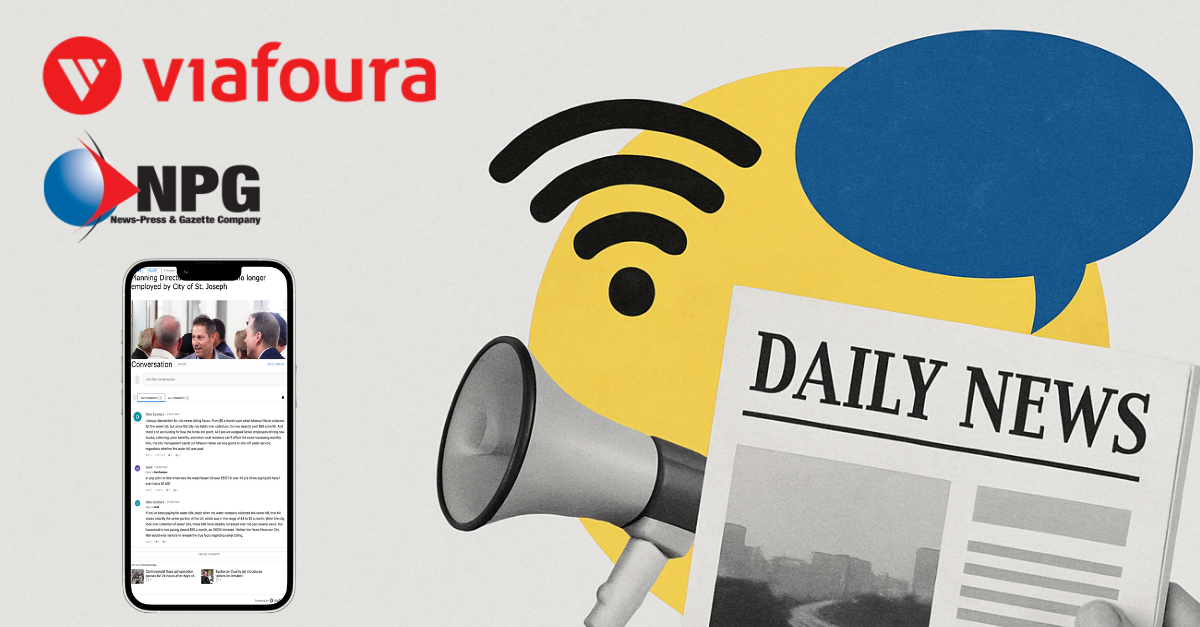Publishers that successfully activate a community strategy are seeing measurable impact. According to data from Viafoura, community members generate 5.3x higher dwell time, are 45x more likely to subscribe and make 3x more site visits compared to standard audiences.
Community members contributing user-generated content like comments, questions and reviews go even further. They visit publisher sites 6x more often per month, produce 3x more page views and spend 40x more time on site. Publishers can double their registration rates by fostering direct relationships with readers, unlocking deeper engagement and valuable first-party data.
Personalized community notifications, such as “someone replied to your comment” or “you gained a new follower,” also significantly outperform traditional alerts. These messages generate click-through rates up to 10x higher than standard notifications, making them a powerful tool for reengagement and habit-building.
Publisher shifts lead to deeper relationships, greater loyalty and long-term monetization
Traditional audience development strategies are losing effectiveness. A recent study by The Rebooting found 50% of publishers reported a decline in search traffic over the past year, with organic social media now ranking as a secondary priority for most publishers.
To compensate, publishers are shifting to direct, owned relationships with newsletters (62%) and direct traffic (57%) as the backbone of audience growth. The same study identifies attracting new audiences and building community as top audience development priorities in 2025.
Community engagement is proving to be a critical counterbalance to these trends. As outlined in the Mather article, “The Power of Community: Meeting User Needs to Build Lasting Value,” user needs like “update me,” “connect me” and “keep me engaged” are best met through interactive experiences such as comment sections, live Q&As and community chats. Publishers integrating these features foster deeper relationships, leading to greater loyalty and long-term monetization.
One standout example is The Telegraph, which has made community central to its editorial and audience engagement strategy. Through its newly launched “Your Say” community section, the publication showcases readers’ comments and contributions, highlights articles inspired by reader comments and features journalists answering questions and engaging directly with the community. In essence, The Telegraph is turning community into compelling content and featuring it in a dedicated, high-visibility part of their site. Furthermore, as highlighted in a recent article, community is a driver of engagement and positively impacts SEO, due to the amount of time users spend on content that includes community elements.
Generative AI is accelerating shifts in traffic patterns, pushing publishers to differentiate through trust and human curation. While AI can produce content, it can’t replicate the authenticity or real-time interaction that community engagement offers. According to this survey, 52% of publishers are prioritizing engagement depth alongside audience breadth. By investing in community-building, publishers create a buffer against algorithmic volatility and AI-driven content aggregation.
By owning the audience relationship, publishers can activate a successful community strategy. That means shifting away from rented distribution on third-party platforms and focusing instead on direct channels like newsletters, memberships and on-site engagement.
Community members generate valuable declarative data that fuels personalization, improved ad targeting and subscription growth. This first-party data becomes increasingly important as traditional data sources decline and privacy regulations tighten.
Community engagement also opens the door to diversified revenue streams. Publishers cultivating active user participation can unlock new business lines, including paid subscriptions, live and virtual events and sponsorship opportunities beyond standard display advertising.
Integrating community features, such as comment sections, live Q&As, exclusive forums and personalized content recommendations, directly impacts retention and loyalty. Publishers tracking and optimizing these efforts see higher dwell times, stronger conversion rates and more meaningful reader relationships.
As the industry shifts toward more direct, owned relationships, publishers failing to invest in community engagement risk leaving audience growth and revenue on the table. Platforms are unpredictable, but communities offer a sustainable path to building highly engaged, loyal audiences. The question is no longer whether to invest in community, but how soon publishers can begin.
This article was originally posted on Digiday.




















